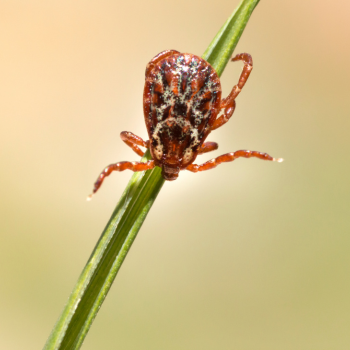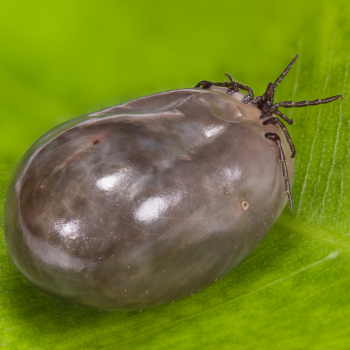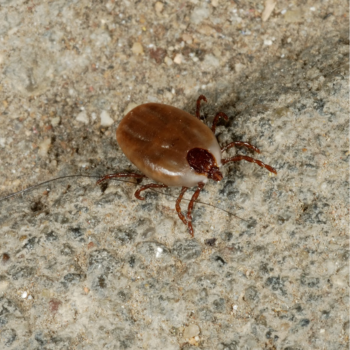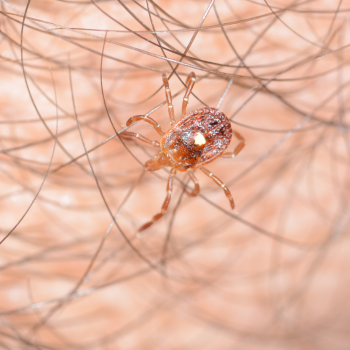Tick Season Is Here!
Ticks pose serious health risks to humans and animals alike. As vectors of diseases like Lyme disease, Rocky Mountain spotted fever, and other tick-borne illnesses, these tiny creatures can have a significant impact on your well-being. Understanding ticks, their habits, and how to prevent their bites is crucial for protecting ourselves and our loved ones. In this blog you can learn the following:
- What is a tick?
- How to remove a tick
- Ways to prevent ticks when enjoying the outdoors
- How to prevent a tick infestation in your yard
- Types of ticks found in Maryland and Virginia
- 6 tick diseases found in Maryland and Virginia
What are Ticks?
While often called insects, Ticks are arachnids—meaning they are related to spiders and mites—and can be found in grassy and wooded areas worldwide. Adult ticks are approximately 0.1 to 0.2 inches in length, depending on their age, sex, and species, and reproduce each fall, with females laying up to 3,000 eggs.
Ticks survive by feeding on animal blood, including humans’, and have adapted to feed for long periods—their teeth are curved to remain securely attached for days. If that wasn’t bad enough, after having latched on for 24-48 hours, ticks could start to transmit dangerous diseases such as Lyme disease, Rocky Mountain spotted fever, tick paralysis, and many more.
How to remove a tick
After playing outside or hiking through the woods, it’s crucial to check for ticks. As ticks like warm, dark places, check along joints, such as behind the knees or inside elbows and armpits, behind your ears, and anywhere covered in hair, including your neck. If found, ticks must be handled carefully and removed as soon as possible.
- Remove the tick from the skin: If a tick is crawling along your skin but has not latched yet, remove it using a gloved hand or tweezers. If the tick has been on, use fine-tipped tweezers to grab the tick as close to the skin’s surface as possible. Try to capture the animal’s head instead of its body and carefully pull it away from the skin. Be sure to completely remove the tick, as its mouthparts can sometimes get left behind, causing infections.
- Clean the area: Once the tick has been removed, thoroughly wash the area with soap and water and then shrub it with iodine or rubbing alcohol.
- Identify the tick: As some types of ticks are associated with transmitting specific diseases, if you can, try to identify which species it is to make it easier to identify potential infections.
- Dispose of the tick: The most effective way to kill a tick is to drop it directly into rubbing alcohol, though some people will also flush it down the toilet or wrap it tightly in tape and throw it into the trash.
- Monitor the bite: Make sure to watch the site of the bite for several days after the tick has been removed and look for any localized rash, redness, or swelling.
- If needed—see a doctor: If you start showing any symptoms, such as fever, chills, body aches, or a rash near the bite location, go to a doctor immediately.
Ways to prevent ticks when enjoying the outdoors
- Wear light-colored long pants and long sleeves when outdoors and especially in wooded areas.
- Use bug spray containing at least 20% DEET
- Avoid sitting on logs, stumps, or the ground in brushy areas.
- Put clothing in a hot dryer for 10 minutes before washing to kill any lingering ticks that may be attached to clothing
How to prevent a tick infestation in your lawn
There are several areas throughout your lawn that ticks would love to call home. Here are some tips to prevent a tick infestation in your lawn:

Photo credit: TickWorld.org
Types of Ticks found in Maryland and Virginia
There are four species of ticks commonly found in Maryland and Northern Virginia and all of them are capable of transmitting diseases.
American Dog Tick

This species primarily feeds on dogs and humans. It can transmit Rocky Mountain spotted fever, tularemia, and tick paralysis.
Deer Tick

This tick is the primary carrier of Lyme Disease and is named for its black legs. It is also known as “deer tick,” as the adults survive the winter by feeding off white-tailed deer. This type of tick is also a carrier of anaplasmosis, babesiosis, and Powassan disease.
Brown Dog Tick

Although this tick prefers to feed on dogs, it will also feed on humans. As a result, it can spread Rocky Mountain spotted fever, canine ehrlichiosis, and canine babesiosis.
Lone Star Tick

This tick species has a tiny white dot on its back representing a ‘star’—and is not from Texas! It is linked to ehrlichiosis, STARI, tularemia, and the most known side effect—a meat allergy.
6 tick diseases found in Maryland and Virginia
Disease: Lyme Disease
Transmission: Blacklegged ticks
Signs of Lyme disease: A circular red rash resembling a “bull’s eye” appears near the bite site. Symptoms: Flu-like symptoms such as chills and joint pain can occur one to four weeks after being bitten, while chronic conditions such as arthritis and nervous system issues can occur months or years later.
Disease: Rocky Mountain Spotted Fever
Transmission: A number of different tick species, including the Rocky Mountain wood tick, brown dog tick, and American dog tick
Signs of Rocky Mountain Fever: A full-body rash that can develop a few days following a bite
Symptoms: Fever and nausea, as well as permanent damage to blood vessels that can cause paralysis and mental disability.
Disease: Anaplasmosis
Transmission: The bite of an infected blacklegged tick
Signs of Anaplasmosis: Fever, headaches, and nausea
Symptoms: Typically surface within one to two weeks following a bite. In rare cases, anaplasmosis can cause respiratory failure, bleeding issues, and even death.
Disease: Babesiosis
Transmission: Infected blacklegged ticks
Signs of Babesiosis: Fever, fatigue, and nausea
Symptoms: It can take up to nine weeks for symptoms to appear following a tick bite, while some cases may be asymptomatic.
Disease: Ehrlichiosis
Transmission: Infected lone star ticks and blacklegged ticks
Signs of Ehrlichiosis: Chills, muscle aches, and headaches can surface in the first five days following a bite.
Symptoms: Some people report seeing a rash develop after suffering from fever, which can appear as red dots. In rare cases, the disease can lead to serious health issues such as damage to the brain or nervous system, organ failure, and uncontrolled bleeding.
Disease: Tularemia
Transmission: Infexted American dog tick, lone star tick and Rocky Mountain wood tick
Signs of Tularemia: Fever, chills, joint pain, and loss of appetite
Symptoms: Following a bite from an infected tick, symptoms can take up to 21 days to appear.
Most cases of the disease are characterized by flu-like symptoms.
Protect Your Family & Your Home From Ticks
Tick Spray Quotes
"*" indicates required fields
